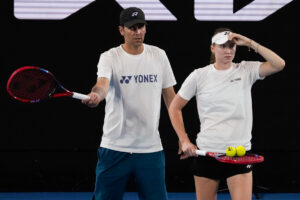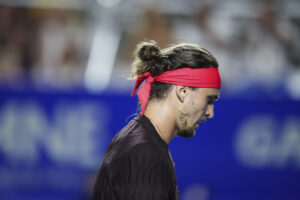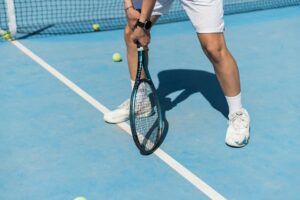American Players and the Clay Court Season
Inspired by the start of the clay season, I recently wrote a short blog about American women players, Madison Keys, Amanda Anisimova and Sloane Stephens, looking good on clay in advance of the French Open. I thought it would not be fair to leave American men out of the conversation!
With Fabio Fognini capturing his first ATP Masters 1000 title, in Monte Carlo recently, the title ended up in the hands of another European for the 15th consecutive year, following Rafael Nadal with 11 titles, Novak Djokovic two and Stan Wawrinka one. Fognini’s win, made this the 63th official year that no American men has won this important lead-up to Roland Garros. The last appearance by an American in the final was in 1992, when Aaron Krickstein of United States lost to Thomas Muster of Austria.
1956 is the last time an American man, Hugh Stewart won in Monte Carlo. To put this in perspective, the Open Era started in 1968 and ATP was founded in 1972!
This lack of success at Monte Carlo is a result of a lower level of participation and a general wariness toward playing on red clay. Now that Monte Carlo is no longer a mandatory event for ranking points and there is a tournament in Houston on clay (U.S. Men’s Clay Court Championship), American players are not inclined to travel far to play in Monte Carlo and choose to prepare for the French Open closer to home. The challenge is that the Har-Tru clay used in Houston has nothing to do with la terre battue of Roland Garros!
Har-Tru is the green clay you may have seen at your local club, leading you to believe that there are plenty of clay courts in the US to practice on. But not all clay is equal. The play on the green clay (or Har-Tru) is actually more like playing on a hard court than a red clay court. Har-Tru composed of Pre-Cambrian metabasalt found in the Blue Ridge Mountains of Virginia. The red clay, on the other hand is brick and limestone. Har-Tru is faster, harder and often far more predictable with its bounces than red clay, la terre battue. It is worth mentioning, even on this friendlier surface, the winner of the U.S. Men’s Clay Court Championship this year was Christian Garin of Chile and not an American.
Red clay is the court of choice for most European and Latin American players. The players can slide longer and dig deeper on the court, compared to the green clay, and the balls bounce higher, with less predictability. It is a slower game, accommodating the styles of dirt-ballers like Nadal. Har-Tru is meant for club players in the US and not any of the European or Latin American players, who grew up on the red clay. It would be interesting to see to see Rafael Nadal or Dominique Thiem try to play on the surface.
The last American to win the French Open was Andre Agassi in 1999. In an attempt to remedy the problem and help American players prepare for Roland Garros, the USTA built six red clay courts at the National Campus in Lake Nona, Fla., with imported dirt from Italy; but most players entering the French Open would not be training on them. And while six real European courts at the USTA National Campus are better than none, there is no way for players practicing a short while on them to match opponents who have learned the game on the red clay and have grown up playing on it.
Back to Monte Carlo, Taylor Fritz, the only American to even play this year, defeated Jo-Wilfried Tsonga and Diego Schwartzman before going out to Novak Djokovic in the third round. In the following tournament, Fritz lost in the second round in Barcelona to Kei Nishikori, after beating countryman Reilly Opelka.
It does not make sense to dwell on lack of success by Americans in clay-court tournaments; unless players can start over again and train on real crushed-brick clay as juniors, the trend will continue.
U.S. MEN STILL IN DESPERATE NEED OF BIG CLAY TITLE
AMERICANS CONTINUE TO FIGHT A LOSING BATTLE ON CLAY
Does the clay-court season take up too much of the tennis calendar?









Comments: 0